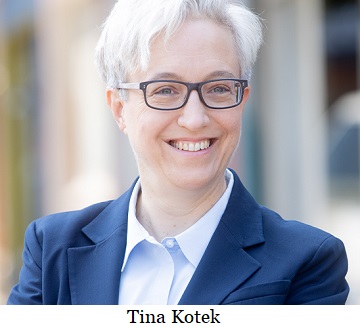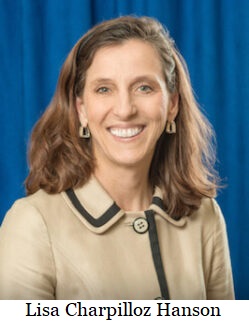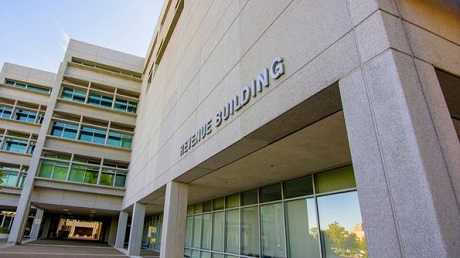
On this day, September 4, 2020, law enforcement declared an unlawful assembly and arrested 27 people after protesters marched through the streets of Portland on to a police building, where officers stood waiting outside.
 Post an Event
Post an Event
| Benton County Republicans’ Private Fundraising Event, “Bent-on Boots and Bling” with Trey Taylor |
| Friday, September 5, 2025 at 5:00 pm |
| Featuring Trey Taylor
Music Private Event
Friday, September 5, 2025 5:00-5:30 pm VIP Reception
5:30-8:00 pm Heavy Appetizers,
Auction, Concert
Red: $750 VIP Reception
Front Row Table Sponsor
White: $500 Table Sponsor
Blue: $50 per person
Limited Seating. Get Yours Now!!!
Support Local
Dress up: Bling, Cowboy, Patriotic Benton County Republican
FUNDRAISER
www.BentonGOP.org
Get your tickets today at:
https://www.bentongop.org/event-details/benton-county-republicans-fundraiser/form
About Trey:
Trey is the youngest African American Man in Country Music History. The Denver Post wrote
"It's impossible to miss his enthusiasm. With a fondness for cowboy boots, gaudy colors and dazzling jewelry, Trey Taylor could stand toe to toe with any of the Pop, Country or even Rap
contemporaries of his generation.“ |
| Trysting Tree Golf Club, 34028 NE Electric Rd., Corvallis |
Much-needed road reconstruction projects will extend into 2024
The Willamette National Forest
will begin much-needed road reconstruction projects this month to remove hazards and repair portions of the transit system damaged in recent years by wildfires. The multi-phase emergency response project in the Detroit Ranger District will extend into 2024 and will repair sections of Forest Service Road (FR) 46, French Creek Road (FR 2223) and Whitewater Road (FR 2243), among others.
The 2020 Beachie Creek and Lionshead fires burned approximately 40% of the Detroit Ranger District and left nearly 200 miles of fire-damaged roads in need of major repairs. The first phase of the disaster-recovery project will include road work along 36 miles of the Detroit Ranger District transit system. FR 46, part of the West Cascades National Scenic Byway, will have periodic delays later this fall. The Forest Service will provide public notice of any delay or closure on FR 46 two weeks in advance. The French Creek and Whitewater repair projects will be in an existing closure area.
Disaster response crews and heavy equipment operators will work to reduce the risks of hazardous fuels, as well as overhead and up-slope hazards that have fallen across roadways or remain standing along important travel routes. The extensive roads project will include risk-mitigation of fire-damaged trees, roadside fuel reduction, and essential maintenance and road reconstruction so that access to and through the fire-burned areas can be safely restored.
A D V E R T I S E M E N T

A D V E R T I S E M E N T
Forest Service crews also continue to mitigate safety hazards at fire-impacted recreational sites and trails as the Detroit Ranger District brings in advanced tree fallers from other Forest Service units to help remove dead and damaged trees in recreational areas.
“We understand that people are eager to visit their favorite places,” said Detroit District Ranger Michelle King. “These major improvement projects will help us provide workers and visitors with safe access to our forest roads and recreation sites into the future.”
Areas that will remain closed this year include McCoy Road (FR 2233), Boulder Road (FR 2231), South Breitenbush Road (FR 4685), and Opal Creek (FR 2209 and FR 2207).
Visitors are encouraged to Know Before You Go and exercise caution on nearby roadways that may have heavy truck and equipment traffic. To check the status of a location before entering the Forest, please visit the
Willamette National Forest - Alerts & Notices.
--Ben Fisher| Post Date: 2023-10-18 10:55:37 | Last Update: 2023-10-18 11:21:51 |
Providers report increased use
In November 2020, Oregon voters passed Measure 110, the Drug Addiction Treatment and Recovery Act of 2020, to better serve people actively using substances or diagnosed with a substance use disorder. The Oregon Health Authority (OHA) says Measure 110 was in response to the high rate of drug addiction and overdoses in Oregon, and the disproportionate impact of those outcomes on Oregon’s communities of color. However, the ballot title was Drug Decriminalization and Addiction Treatment Initiative.
OHA says the goal for Measure 110 was to establish a more equitable health-based and effective approach to substance use disorder. Did voters know that was the goal of Measure 110 when treatment was not the sponsor's goal? Treatment was added as a cleanup for the decriminalization goal - moving convicted drug users into treatment centers, not to mention the additional addicted users due to the free movement of drugs. So, treatment providers must show an increase to just maintain the status quo of the number of untreated prior to Measure 110.
OHA recently released
Measure 110 providers report on the first three quarters ending March 31, 2023, showing a continued increase in the number of clients served statewide in all seven network service areas.
Overdose prevention and peer support services accounted for the largest client gains in the quarterly report.
- Providers reported more than 7,000 people received substance use disorder treatment -- a 104% increase
- Reports show more than 47,000 service encounters for people seeking substance use treatment, which is an increase of 134%
- Providers reported large increases in the percentage of clients served through employment and housing services (365% and 190% respectively)
- The number of people seeking substance use treatment increased by 126 percent for people identifying as Hispanic/Latino, Latina or Latinx, 49 percent for people identifying as Black/African American and 180 percent for people identifying as American Indian/Alaskan Native.
- The largest expenditures continue to be housing services at more than $8.7 million in the third quarter, representing the investment made in building new recovery housing across the state.
“It’s encouraging to see the reported client gains by Measure 110 service providers. It’s another sign that the statewide networks are taking hold and more people are getting treatment along with critically needed services and supports,” said OHA Behavioral Health Director Ebony Clarke.
OHA has developed a comprehensive
Measure 110 data reporting dashboard that includes quarterly data, expenditures, key demographic information, and aggregated narrative summaries for the 42 statewide service networks.
Also starting this reporting period, the dashboard will contain stories of how Measure 110 is working to save lives, support people in recovery, stabilize youth and families and help people find housing and employment.
A D V E R T I S E M E N T

A D V E R T I S E M E N T
The third quarter reporting shows that investments are trending away from the emphasis on capital expenditures and toward sustained treatment and recovery services.
The Measure 110 program continues to refine service data collection for communities of color and other disproportionately affected communities, as the networks transition toward implementing Race Ethnicity and Language Disability (REALD) standards in their data collection.
Providers report that even with expanded services, they have decreased wait times for accessing treatment. But, nearly 40 percent cited staff retention and recruiting as an ongoing challenge.
One provider cited an example of decreased wait times: “Our transitional home was opened, and we had immediate placement of one family, including a mother and her infant.”
The deadline for the next round of reporting due October 16 will cover the time between April through June 30, 2023. Hopefully in time for legislative review.
--Donna Bleiler| Post Date: 2023-10-15 21:14:21 | Last Update: 2023-10-14 23:02:09 |
A case for a special session
In the wake of Representative Reschke (R-Crater Lake) urging Oregon Governor Kotek to call a special session to address fentanyl deaths and overdose events brought on my Measure 110, the Oregon Supreme Court intensifies the need.
In the criminal case of
Oregon v. Hubbell, a trial court convicted defendant Brian Hubbell of delivery under a prohibited act in ORS 475.752 based on evidence that defendant’s extended-stay hotel room contained a large quantity of fentanyl, a portion of which was packaged in a manner consistent with an intent to sell it to individual users or dealers.
Hubbell was arrested after three people overdosed from the fentanyl found in his hotel room. Hubbell was in police custody at the time and told detectives that he obtained the tub of fentanyl from an ex-girlfriend whose associate in the military had obtained it “through the dark web from China.” He had not distributed any as he knew the dangers and it had been in the tub since he obtained it.
The arguments in the case were around the exception under ORS 475.005(8), “Deliver” or “delivery” means the actual, constructive or attempted transfer, other than by administering or dispensing, from one person to another of a controlled substance, whether or not there is an agency relationship.
Over defendant’s objection, the trial court ruled that evidence was sufficient to convict him of delivery under
Oregon v. Boyd, 756 P2d 1276 (1988). In
Boyd, the Court of Appeals interpreted the phrase “attempted transfer” in ORS 475.005(8) by applying principles of liability for the undefined crime of attempt.
Boyd used ORS 161.405(1), whereby a person who intentionally takes a “substantial step” toward committing a crime is liable for attempting the crime.
Boyd held that possessing a controlled substance in a quantity too large to be consistent with personal use, combined with evidence of an intent to transfer that substance, constitutes a substantial step toward transferring it and was sufficient to show an “attempted transfer.”
A D V E R T I S E M E N T

A D V E R T I S E M E N T
On appeal in this case, defendant argued that evidence was insufficient to show delivery even under
Boyd. The Court of Appeal, on its own, re-examined
Boyd and overruled it, holding that possession plus an intent to deliver, without more, was insufficient to show an “attempted transfer” for purposes of the completed crime of delivery of controlled substances. It could, however, establish a “substantial step” for purposes of the undefined crime of attempt. They determined that their ruling had been counter to the intent of the legislature in adopting the criminal code and providing for a hierarchy of completed versus attempted crimes.
Since
Boyd has set the standard for other cases, the reversal of the Court of Appeals, and now confirmation by the Oregon Supreme Court, may have consequences for Oregonians who have been charged with and convicted of the completed crime of delivery on the
Boyd theory.
What will that do to an already drug addicted Oregon to have dealers and drug traffickers released who were convicted using
Boyd? Will a special session help to tighten the statutes so enforcement can rid Oregon of deadly drugs?
--Donna Bleiler| Post Date: 2023-10-14 21:53:00 | Last Update: 2023-10-14 23:01:41 |
“This determination is incredible news for commercial fishers”
Oregon Governor Tina Kotek
has announced that the U.S. Secretary of Commerce Gina Raimondo has determined that a commercial fishery failure occurred during 2018, 2019 and 2020 due to a fishery resource disaster, affecting Oregon Chinook Salmon Fisheries. This determination is in response to a request from Governor Kate Brown in October 2021.
Approved fishery disaster determinations make these fisheries eligible for funding from current fishery disaster appropriations to aid in the recovery of affected communities, restore the fishery, and/or prevent future disasters.
“This determination is incredible news for commercial fishers who have been waiting for years to find out whether or not they can receive support from the federal government,” Governor Kotek said. “This is a result of the work of Governor Brown and our congressional delegation to recognize and advocate for Oregon’s commercial fisheries. I am also hopeful for a future determination for our recent fisheries disaster declaration request.”
A D V E R T I S E M E N T

A D V E R T I S E M E N T
NOAA Fisheries, the federal agency in charge of the stewardship of U.S. national marine resources, will notify award recipients of their eligibility for funding and provide guidance on the development of applications for federal financial assistance (also known as spend plans) in the coming weeks.
In April 2023, Governor Tina Kotek requested that the U.S. Department of Commerce make an expedited declaration of a federal fishery resource disaster for ocean commercial salmon fisheries for 2023. That request is still active and has not yet been determined. The press release with that announcement can be
found online.
--Ben Fisher| Post Date: 2023-10-14 19:39:08 | Last Update: 2023-10-14 19:56:40 |
Oregon joins the PNWH2 Hub
Oregon has rejected hydrogen power, but now that there is federal money available, will Oregon Governor Kotek seriously bring hydrogen to the state? The U.S. Department of Energy (DOE) established grants in 2022 to develop Hydrogen Hubs across the country. The
Pacific Northwest Hydrogen Association’s PNWH2 Hub has been selected as one of the Regional Clean Hydrogen Hubs that is eligible to receive $1 billion in federal funds.
Pacific Northwest Hydrogen Association has already established private-public partnership with Washington State to jumpstart the state’s transition to clean hydrogen, particularly to decarbonize sectors such as maritime, aviation, and heavy industry. Washington Green Hydrogen Alliance, Washington State University, Pacific Northwest National Laboratory, and many private corporations have joined in partnerships.
The PNWH2 Hub will span across Washington, Oregon, and Montana, and will leverage the clean power and innovative technology companies in the Pacific Northwest to accelerate the transition to clean hydrogen production and use. The Washington hub will focus on decarbonizing the region’s hard-to-electrify heavy-duty transportation, long-duration energy storage, ports, agriculture and industrial operations.
Hydrogen atoms are contained in water, plants, animals and, of course, humans. But while it’s present in nearly all molecules in living things, it’s very scarce as a gas – less than one part per million by volume. The draw is that burning hydrogen does not release carbon dioxide. Hydrogen can be produced from a variety of resources, such as natural gas, nuclear power, biogas and renewable power. The challenge is harnessing hydrogen as a gas on a large scale to fuel homes and businesses. Hydrogen is also a lightweight fuel option for road, air and shipping transportation.
The Pacific Northwest Hydrogen Association brings together key players in the industry to respond to the opportunity, build the infrastructure necessary to form such a hub and integrate it into the state’s clean energy portfolio, eliminate fossil fuels from its electricity generation portfolio by 2045 and adopt a 100% clean electricity standard as well as net-zero greenhouse emissions by 2050,
A D V E R T I S E M E N T

A D V E R T I S E M E N T
“Oregon has long been a leader in clean, renewable energy production,” said Governor Tina Kotek. “This transformational opportunity to accelerate development of the nation’s clean energy economy is tailor-made for the Pacific Northwest, where a proud tradition of technological innovation and collaboration in taking on bold challenges is in our nature. I am grateful for this exciting investment from the U.S. Department of Energy and the Biden Administration.”
“With this investment, the Pacific Northwest will be able to develop a new clean hydrogen economy that will create local jobs and build on the region’s long history of supporting clean energy resources,” said Oregon Department of Energy Director and PNWH2 Board Vice Chair Janine Benner. “We can seize this opportunity to ensure an equitable clean energy transition that invests in local communities across the region.”
Founded with unions, environmental groups, and tribal representatives, the PNWH2 Hub includes representation from these groups on its Community Benefits Plan governing board. The hub has also committed to negotiating Project Labor Agreements for all projects over $1 million and anticipates creating more than 10,000 direct jobs.
The PNWH2 Hub is eligible to receive up to $1 billion in federal funding over four DOE-defined development phases spanning nine years, with $20 million allocated for Phase 1. DOE will evaluate the hub’s activities and deliver go/no-go decisions at each phase.
Can and will Oregon shift its agenda and stop the attack against natural gas and fossil fuels so its abundance can be used to produce clean hydrogen energy?
--Donna Bleiler| Post Date: 2023-10-13 16:25:55 | Last Update: 2023-10-13 17:37:19 |
How can we make the state courts better?
Oregon State courts
are asking Oregonians for ideas about how to improve.
Oregon Judicial Department, which runs the state circuit courts, says that it invites all Oregonians
to an online community conversation to provide ideas and feedback about how to make
the courts better.
The conversation is
happening Monday, Oct. 30, from 5:30 to 7 p.m. OJD says that they especially
want to hear from people who have used, interacted with, or helped someone else
interact with the state courts in the past year.
Topics will include how to make courthouses safer and more welcoming, how to make it
easier to do business with the courts, how to make jury duty better, and how the courts
can do a better job talking to and listening to the community.
Spanish interpreters will be available. Those interested can request ADA accommodations
via email. Find the link to join the conversations on the
OJD Community Conversations website
A D V E R T I S E M E N T

A D V E R T I S E M E N T
OJD outlines the following topics that may be covered:
- Safe and Welcoming Courthouses
How can we make our courthouses safer?
How can we make you feel more welcome?
How can we help you get what you need, in the language that’s best for you?
- Community Outreach
How can we do a better job letting you know how to the courts work?
How can we get ideas from you and others in the community?
- Doing Business With the CourtsHow can we make our forms better? (the things you fill out when you need something from the courts)
How can we make our online/video hearings better?
How can we help you manage court fines or fees?
- Jury Duty
How can we make it easier for you to take part in jury duty?
How can we make the courthouse experience better for jurors?
--Ben Fisher| Post Date: 2023-10-13 12:15:18 | Last Update: 2023-10-13 12:43:42 |
“Oregon faces complex natural resources challenges”
Oregon Governor Tina Kotek
has appointed Lisa Charpilloz Hanson, executive director of the
Oregon Watershed Enhancement Board, to lead the Oregon Department of Agriculture. The Oregon Senate will take up her confirmation as permanent director in November.
“Oregon faces complex natural resources challenges across our state that require data-driven, resilient solutions,” Governor Kotek said. “Lisa Charpilloz Hanson brings decades of experience working with natural resource communities to meet the needs of Oregonians across the state. I look forward to seeing her great work and leadership at the agency.”
Kotek says that Lisa Charpilloz Hanson brings two decades of leadership, policy direction, and program administration to the role, including 15 years as deputy director at ODA. Kotek insists that Charpilloz Hanson has experience leading, developing, and directing the budget requests and legislative agendas of both ODA and OWEB. Charpilloz Hanson also serves on the
Oregon State University College of Agricultural Sciences Leadership Academy Advisory Board.
A D V E R T I S E M E N T

A D V E R T I S E M E N T
“It is an honor to return to the Department of Agriculture and serve Oregonians,” Lisa Charpilloz Hanson said. “Oregon’s diverse agricultural and food sectors have changing needs in our changing environment. I am excited to work with the team at the department to enhance the natural environment and the value of working lands. I look forward to working with food and ag producers, strengthening existing partnerships and building new ones, while celebrating the diversity of Oregon agriculture and continuing to introduce customers in Oregon, the US and around the world to Oregon’s high-quality products.”
Charpilloz Hanson’s start date is December 1st, 2023. Bill Ryan will continue as acting director of ODA until then.
--Ben Fisher| Post Date: 2023-10-12 06:25:54 | Last Update: 2023-10-12 06:46:25 |
“These dashboards make it easy for people to view injury and fatality data”
The Oregon Health Authority (OHA)
has now announced that they are unveiling another interactive data dashboard to help people more easily track state, county and demographic trends in deaths and hospital visits related to a range of transportation-related injuries.
The
Oregon Transportation Safety Dashboard, developed by the Injury and Violence Prevention Program at the OHA Public Health Division, improves access to the data among the public, state and local agencies, and community organizations that work to reduce incidence of transportation-related injuries and deaths.
“These dashboards make it easy for people to view injury and fatality data,” said Dagan Wright, Ph.D., M.S.P.H., senior injury epidemiologist and informaticist at the Public Health Division. “The transportation dashboard will help people understand transportation-related injury trends over time, characteristics of who is getting injured and by what types of transportation.”
A D V E R T I S E M E N T

A D V E R T I S E M E N T
The dashboard includes mortality, emergency department discharge and hospital discharge data in nine transportation categories, such as motorcycle, motor vehicle occupant, pedal cyclist and pedestrian. Data are aggregated for annual statewide trends, as well as a four-year average for county-level and demographic trends.
The new dashboard affirms trends that have made headlines in recent months:
Overall, fatalities for transportation are increasing, specifically for motorcycles, pedal cyclists and pedestrians.
OHA says that an increased focus on emerging transportation modes that cause injury is necessary in order to get a full picture of changing trends. The dashboard includes a “pedestrian-involving wheeled device” category to capture popular new transportation modes like e-scooters.
“What we have seen in both non-fatal transportation injuries and deaths needs attention from our communities, especially for more vulnerable users,” Wright said. “Data dashboards like these help us monitor trends and better anticipate where to direct resources so we can reduce the burden of these injuries on individuals, communities and agencies.”
--Ben Fisher| Post Date: 2023-10-11 13:49:46 | Last Update: 2023-10-11 14:09:54 |
Tax-hungry Democrats have been proposing to divert kicker funds away from taxpayers
Imagine if you went to your favorite fast food restaurant and ordered the cheeseburger combo with fries and a drink for $12.99 and handed the cashier a $20 bill. Suppose, instead of handing you back $7.01 in change, they added items to your order to use up the $20, figuring you needed a larger drink, some chicken nuggets, or a piece of pie for desert. You'd be puzzled, if not outraged.
Oregon's kicker law keeps state government from doing the equivalent -- except instead of a $20 bill, we're talking millions or even billions of dollars.
The 2% surplus kicker gives taxpayers an income tax credit if actual revenues for the biennium are more than 2% higher than forecast at the time the budget was adopted. When the law was first enacted, the Oregon Department of Revenue sent kicker checks to taxpayers. In 2011, the Oregon Legislature
changed the law so that the kicker refund appeared as a credit on the next year's taxes. It is estimated that the distribution via check cost the taxpayers an
additional $1M per kicker year.
| Personal Income Kicker History |
| Biennium | Tax
Year | Surplus
in $M | Percent | Mean
Distribution |
| 1979-81 | 1981 | -$141 | None | - |
| 1981-83 | 1983 | -$115 | None | - |
| 1983-85 | 1985 | $89 | 7.70% | $80 |
| 1985-87 | 1987 | $221 | 16.60% | $190 |
| 1987-89 | 1989 | $175 | 9.80% | $130 |
| 1989-91 | 1991 | $186 | Suspended | - |
| 1991-93 | 1993 | $60 | None | - |
| 1993-95 | 1994/5 | $163 | 6.27% | $110 |
| 1995-97 | 1996/7 | $432 | 14.37% | $290 |
| 1997-99 | 1998/9 | $167 | 4.57% | $100 |
| 1999-01 | 2000/1 | $254 | 6.02% | $160 |
| 2001-03 | 2002/3 | -$1,249 | None | - |
| 2003-05 | 2004/5 | -$401 | None | - |
| 2005-07 | 2006/7 | $1,071 | 18.60% | $610 |
| 2007-09 | 2008 | -$1,113 | None | - |
| 2009-11 | 2010 | -$1,050 | None | - |
| 2011-13 | 2012 | $124 | None | - |
| 2013-15 | 2014 | $402 | 5.60% | $210 |
| 2015-17 | 2016 | $464 | 5.60% | $250 |
| 2017-19 | 2018 | $1,688 | 17.17% | $910 |
| 2019-21 | 2020 | $1,898 | 17.34% | $990 |
| 2021-23 | 2022 | $5,619 | 44.28% | |
The kicker law divides all General Fund money into two pots: (1) corporate taxes; and (2) personal income taxes plus all other revenues. At the end of each biennium, if the actual collections in either of these two pots are more than 2% higher than was forecast at the close of the regular session, then a refund or credit must be paid. If a kicker is triggered in a pot, then all the money in that pot in excess of the close of session forecast, including the 2%, is returned to taxpayers.
In 1990 the legislature suspended the potential $246 million kicker because of budget problems arising from the implementation of Ballot Measure 5's property tax reform.
In 2012, voters changed the kicker law so that surpluses in the corporate pot fund a K through 12 public education. Most experts agree that this has the practical effect of diverting the money into the general fund, as this money displaces what were formerly general fund allocations to education.

The amount refunded in the case of the individual taxpayers or allocated to the general fund for public education is an identical proportion of each taxpayer’s personal income tax liability for the prior year. For example, if the kicker refund is 5% and the taxpayer had a liability of $1,000, he or she would receive a refund of $50. The estimate upon which the kicker calculation is based can be increased, thereby reducing or eliminating the kicker refund/credit, on a one-time basis if an emergency is declared and approved by a 2/3 vote in each chamber of the Legislative Assembly.
Over the years, tax-hungry Democrats have been proposing to divert kicker funds away from the taxpayers who paid them. In the 2023 session, Senator Jeff Golden (D-Ashland) propsosed
changing the kicker distribution from a payment proportional to the amount paid by the taxpayer to an equal distribution to all personal income taxpayers. The bill found little support and died in the Senate Committee on Finance and Revenue. This proposal echoed nearly identical proposals by Representative Phil Barnhart (D-Eugene) in
2016 and
2017
Senator James Manning, Jr. (D-Eugene) proposed an
amendment to the Oregon Constitution in 2017 and 2019 which would have diverted the individual kicker into education.
The "Kicker" law can be found in the Oregon Constitution:
Article IX, Section 14. Revenue estimate; retention of excess corporate tax revenue in General Fund for public education funding; return of other excess revenue to taxpayers; legislative increase in estimate. (1) As soon as is practicable after adjournment sine die of an odd-numbered year regular session of the Legislative Assembly, the Governor shall cause an estimate to be prepared of revenues that will be received by the General Fund for the biennium beginning July 1. The estimated revenues from corporate income and excise taxes shall be separately stated from the estimated revenues from other General Fund sources.
(2) As soon as is practicable after the end of the biennium, the Governor shall cause actual collections of revenues received by the General Fund for that biennium to be determined. The revenues received from corporate income and excise taxes shall be determined separately from the revenues received from other General Fund sources.
(3) If the revenues received by the General Fund from corporate income and excise taxes during the biennium exceed the amount estimated to be received from corporate income and excise taxes for the biennium, by two percent or more, the total amount of the excess shall be retained in the General Fund and used to provide additional funding for public education, kindergarten through twelfth grade.
(4) If the revenues received from General Fund revenue sources, exclusive of those described in subsection (3) of this section, during the biennium exceed the amount estimated to be received from such sources for the biennium, by two percent or more, the total amount of the excess shall be returned to personal income taxpayers.
(5) The Legislative Assembly may enact laws:
(a) Establishing a tax credit, refund payment or other mechanism by which the excess revenues are returned to taxpayers, and establishing administrative procedures connected therewith.
(b) Allowing the excess revenues to be reduced by administrative costs associated with returning the excess revenues.
(c) Permitting a taxpayer's share of the excess revenues not to be returned to the taxpayer if the taxpayer's share is less than a de minimis amount identified by the Legislative Assembly.
(d) Permitting a taxpayer's share of excess revenues to be offset by any liability of the taxpayer for which the state is authorized to undertake collection efforts.
(6)(a) Prior to the close of a biennium for which an estimate described in subsection (1) of this section has been made, the Legislative Assembly, by a two-thirds majority vote of all members elected to each House, may enact legislation declaring an emergency and increasing the amount of the estimate prepared pursuant to subsection (1) of this section.
(b) The prohibition against declaring an emergency in an act regulating taxation or exemption in section 1a, Article IX of this Constitution, does not apply to legislation enacted pursuant to this subsection.
(7) This section does not apply:
(a) If, for a biennium or any portion of a biennium, a state tax is not imposed on or measured by the income of individuals.
(b) To revenues derived from any minimum tax imposed on corporations for the privilege of carrying on or doing business in this state that is imposed as a fixed amount and that is nonapportioned (except for changes of accounting periods).
(c) To biennia beginning before July 1, 2001. [Created through H.J.R. 17, 1999, and adopted by the people Nov. 7, 2000; Amendment proposed by S.J.R. 41, 2010, and adopted by the people Nov. 2, 2010; Amendment proposed by initiative petition filed Dec. 7, 2011, and adopted by the people Nov. 6, 2012]
Editor's note: We gratefully acknowledge documents produced by the Legislative Revenue Office and the Oregon Department of Revenue for their contributions to this article
--Staff Reports| Post Date: 2023-10-11 09:40:02 | Last Update: 2023-10-11 09:44:55 |
“We mourn the tragic loss of hundreds of innocent civilian lives”
In recognition of the thousands wounded and held hostage, and more
than 1,100 innocent lives lost to Hamas terrorist attacks in Israel, Oregon House Republican
Leader Jeff Helfrich (R-Hood River) is asking Oregon Governor Kotek to immediately order all
flags to fly at half-staff.
“We cannot ignore the atrocities that have been committed against the Israeli people and
the Jewish community at large," stated Helfrich. "Blood thirsty Hamas terrorists have murdered more than
1,100 innocent men, women, and children, and held hostage hundreds of others –
including Americans. All statements dismissing these atrocities are disgraceful.
“As a military veteran who has served overseas, it is clear that this war has worldwide
impacts. Now is the time to recognize the evil in front of us and denounce Hamas, a
terrorist organization whose intention is to eradicate the State of Israel and Jewish people
around the world."
“There must be no doubt that the State of Oregon stands firm with Israel and Oregon’s
Jewish communities in their time of need."
A D V E R T I S E M E N T

A D V E R T I S E M E N T
Senate Democratic Leader Kate Lieber and Senate Republican Leader Tim Knopp
released the following joint statement:
“We unequivocally stand with our ally Israel and affirm their right to defend themselves from the
brutal terrorist acts perpetrated by Iranian-backed Hamas. We mourn the tragic loss of
hundreds of innocent civilian lives."
“This violence and chaos must end. The terrorists responsible for the heinous attack must face
severe consequences, and we call on Hamas to release all hostages immediately.”
--Ben Fisher| Post Date: 2023-10-10 14:37:50 | Last Update: 2023-10-10 16:45:08 |
“Now is the time to repeal Measure 110”
Oregon State Representative E. Werner Reschke
has now urged Governor Tina Kotek to call a special session of the Oregon Legislature for the sole purpose of repealing Measure 110.
Representative Reschke, who is a Republican representing Oregon's House District 55, cited the worsening addiction crisis, which recently saw a mass overdose event in the streets of Portland, as well as public opinion polling showing Oregonians want the measure repealed in urging the governor to take action.
“Every day Ballot Measure 110 remains in place, more addicts are created and more people die", said Reschke. "The evidence is clearly seen by the explosion of homelessness and despair throughout the state. It’s obvious to most that Measure 110 has been an abject policy failure."
He continued, “With due respect to my legislative colleagues, we cannot wait until February for a new committee to deliberate and decide. Oregonians want to see immediate action, that’s why a special session, now, is imperative. Every day that goes by, more of our neighbors succumb to addiction, and recovery takes time, is expensive and difficult. Now, not in several months, is the time to repeal Measure 110.”
Representative Reschke went on to point out that Ballot Measure 110 took state funding dedicated to schools, police, cities, and counties and shifted it to the Oregon Health Authority to set up addiction recovery services. At the same time, the measure decriminalized all street drugs.
A D V E R T I S E M E N T

A D V E R T I S E M E N T
During the 2023 Legislative session several bills were introduced by Republican legislators to wind back the harmful effects Measure 110. All were rejected by the majority of Democrat legislators.
“Just a week ago, we saw a mass overdose event involving young adults in Portland," Reschke stated. "It’s such a tragedy — even our kids aren’t safe from this deadly policy. Each day we wait, more harm is done; Measure 110 has cost people their lives; it has failed. Oregonians recognize it, too, with a majority of them supporting outright repeal. By delaying any further, the state’s enabling of addiction is cruel and immoral. We have the power to take action now, to make things right and repeal Measure 110. At the same time, I reaffirm my commitment to ensuring the Oregonians who need help recovering from addiction get the help they need. We must hold state agencies accountable for their failures to deliver promised services and put a real plan of action in place to assist those who are struggling. However, I firmly reject the idea that we must embrace decriminalization to deliver effective addiction recovery services. We’ve already seen that model play-out, and the consequences have been deadly.”
--Ben Fisher| Post Date: 2023-10-09 14:13:59 | Last Update: 2023-10-09 14:58:57 |
Taxpayers will receive record kicker credit on returns next year
The Oregon Office of Economic Analysis has confirmed a more than $5.61 billion revenue surplus in the 2021-2023 biennium, triggering a tax surplus credit, or “kicker,” for the 2023 tax year.
The surplus -- the largest in state history -- will be returned to taxpayers through a credit on their 2023 state personal income tax returns filed in 2024. The credit is based on tax liability for the 2022 tax year. Taxpayers who have not yet filed a 2022 tax return, should file now so they can claim their kicker credit when they file their 2023 tax return.
The surplus leaves some asking, "Why are we
still raising taxes and
proposing removing the cap on property taxes when we have such lopsided surpluses?"
To calculate the amount of their credit, taxpayers can multiply their 2022 tax liability before any credits -- line 22 on the 2022 Form OR-40 -- by 44.28 percent. This percentage is determined and certified by OEA. Taxpayers who claimed a credit for tax paid to another state would need to subtract the credit amount from their liability before calculating the credit.
A D V E R T I S E M E N T

A D V E R T I S E M E N T
Personal income taxpayers can also determine the amount of their kicker using a
What’s My Kicker? Calculator available on Revenue Online. To use the calculator, taxpayers will need to enter their name, Social Security Number, and filing status for 2022 and 2023.
| Personal Income Kicker History |
| Biennium | Tax
Year | Surplus
in $M | Percent | Mean
Distribution |
| 1979-81 | 1981 | -$141 | None | - |
| 1981-83 | 1983 | -$115 | None | - |
| 1983-85 | 1985 | $89 | 7.70% | $80 |
| 1985-87 | 1987 | $221 | 16.60% | $190 |
| 1987-89 | 1989 | $175 | 9.80% | $130 |
| 1989-91 | 1991 | $186 | Suspended | - |
| 1991-93 | 1993 | $60 | None | - |
| 1993-95 | 1994/5 | $163 | 6.27% | $110 |
| 1995-97 | 1996/7 | $432 | 14.37% | $290 |
| 1997-99 | 1998/9 | $167 | 4.57% | $100 |
| 1999-01 | 2000/1 | $254 | 6.02% | $160 |
| 2001-03 | 2002/3 | -$1,249 | None | - |
| 2003-05 | 2004/5 | -$401 | None | - |
| 2005-07 | 2006/7 | $1,071 | 18.60% | $610 |
| 2007-09 | 2008 | -$1,113 | None | - |
| 2009-11 | 2010 | -$1,050 | None | - |
| 2011-13 | 2012 | $124 | None | - |
| 2013-15 | 2014 | $402 | 5.60% | $210 |
| 2015-17 | 2016 | $464 | 5.60% | $250 |
| 2017-19 | 2018 | $1,688 | 17.17% | $910 |
| 2019-21 | 2020 | $1,898 | 17.34% | $990 |
| 2021-23 | 2022 | $5,619 | 44.28% | |
Taxpayers are eligible to claim the kicker if they filed a 2022 tax return and had tax due before credits. Even taxpayers who don't have a filing obligation for 2023, still must file a 2023 tax return to claim their credit. The 2023 Oregon personal income tax return instructions will include detailed information on how to claim the credit on Form OR-40 for full-year Oregon residents, Form OR-40-P for part-year residents, and Form OR-40-N for nonresidents. Composite and fiduciary-income tax return filers are also eligible.
Taxpayers should keep in mind that the state may use all or part of their kicker to pay any state debt they owe, such as tax due for other years, child support, court fines, or school loans.
Taxpayers can donate their kicker with a checkbox on their tax return to the Oregon State School Fund for K-12 public education, but they must donate the entire amount. The donation is permanent and cannot be taken back.
Taxpayers also have the option of donating part or all of their refund to any or all of the 29 charities approved by the Charitable Checkoff Commission. Taxpayers use Form OR-DONATE to designate any amount or all of their refund to donate to charity.
Free tax preparation services are available for both federal and Oregon tax returns. Some software companies offer free software use and e-filing for eligible taxpayers. Visit the
Department of Revenue website to take advantage of the software and free offers and get more information about free tax preparation services.
For more information, go to the
Oregon surplus “kicker” credit page of the Department of Revenue website.
--Staff Reports| Post Date: 2023-10-09 11:23:57 | Last Update: 2023-10-09 14:07:08 |
Read More Articles























 The amount refunded in the case of the individual taxpayers or allocated to the general fund for public education is an identical proportion of each taxpayer’s personal income tax liability for the prior year. For example, if the kicker refund is 5% and the taxpayer had a liability of $1,000, he or she would receive a refund of $50. The estimate upon which the kicker calculation is based can be increased, thereby reducing or eliminating the kicker refund/credit, on a one-time basis if an emergency is declared and approved by a 2/3 vote in each chamber of the Legislative Assembly.
The amount refunded in the case of the individual taxpayers or allocated to the general fund for public education is an identical proportion of each taxpayer’s personal income tax liability for the prior year. For example, if the kicker refund is 5% and the taxpayer had a liability of $1,000, he or she would receive a refund of $50. The estimate upon which the kicker calculation is based can be increased, thereby reducing or eliminating the kicker refund/credit, on a one-time basis if an emergency is declared and approved by a 2/3 vote in each chamber of the Legislative Assembly.





